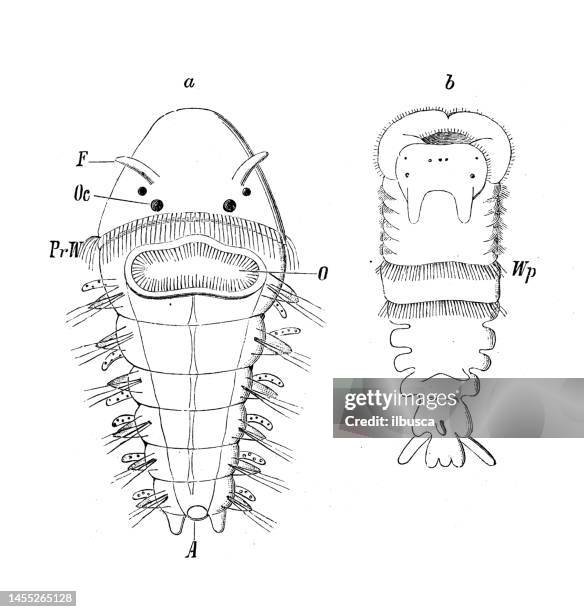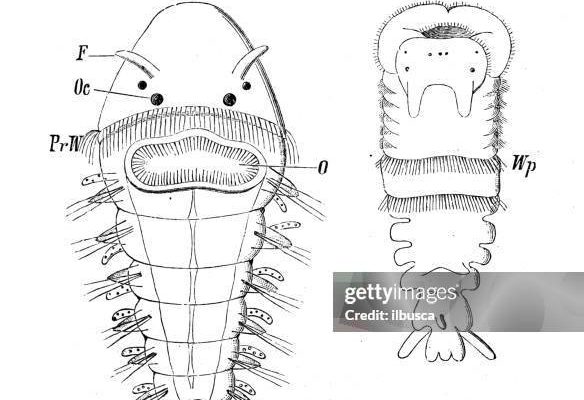
In this article, we’ll dive deep (pun intended) into the reproduction process of the Nereis virens. We’ll explore how they mate, what their eggs look like, and what happens to the larvae once they hatch. Along the way, I’ll try to break things down in a way that’s easy to understand, even if you’re new to marine biology. So, grab your metaphorical snorkel, and let’s get started!
The Unique Mating Ritual of Nereis Virens
In the world of sandworms, mating isn’t just a simple affair; it’s a vibrant event filled with excitement. Nereis virens have a rather interesting method of reproduction. When the time is right, usually in late spring or early summer, males and females engage in a mating dance. This isn’t a solitary activity; in fact, you might find countless worms participating in what looks like a massive underwater party.
During this ritual, males use their parapodia—little appendages on their bodies—to grab hold of females. Once they’re paired up, the male transfers sperm to the female. Here’s the thing: reproduction doesn’t just happen randomly. It often coincides with specific environmental cues like temperature and lunar cycles, ensuring that the eggs are fertilized at the optimal time for survival.
Why is this crucial? Well, many fish and other marine creatures rely on these sandworms as a food source. So, the timing is pretty important for the survival of the species, emphasizing how interconnected marine life really is.
The Journey of Nereis Virens Eggs
After mating, it’s time for the female sandworm to lay her eggs. But where do these eggs go? Surprisingly, Nereis virens don’t lay their eggs in conventional places. Instead, the female releases thousands of eggs into the water column, creating a stunning spectacle. If you could see it, you’d probably imagine a burst of tiny bubbles filled with future sandworms.
Once the eggs are released, they become part of the ocean currents. The eggs are gelatinous, which helps protect them from predators. They float around for a bit, relying on the waves and tides to carry them to safe spots. It’s like sending your kids off to college—exciting and a bit nerve-wracking!
The incubation period for these eggs is usually around two to three weeks, depending on the water temperature. Warmer waters speed things up, while cooler waters slow down the process. But wait, there’s more! The environmental conditions during this time play a significant role in how many eggs survive to become larvae.
Life Stages: From Eggs to Larvae
Once the eggs hatch, they don’t just turn into miniature versions of adult sandworms. Instead, they enter a fascinating larval stage called nudibranch. During this phase, the tiny larvae swim freely in the water for about two to three weeks. Imagine them as the adventurous teenagers of the sandworm world, ready to explore the ocean!
During this time, they feed on phytoplankton and other small particles in the water. This diet is essential for their growth and helps them develop into adult sandworms. Eventually, the larvae undergo a metamorphosis, transitioning into their adult form. They settle down on the ocean floor, burrowing into the sand where they’ll live out their lives.
The transformation from larvae to adult can be challenging, though. It’s a perilous journey filled with predators ready to snack on these newly minted sandworms. This stage is crucial for the sandworm population, and survival rates can vary widely based on environmental factors.
The Importance of Nereis Virens in the Ecosystem
You might be wondering, why should we care about these little sandworms? Well, they play a significant role in their ecosystem. As bottom-dwelling creatures, they help aerate the sediment while feeding on organic materials. This activity fosters a healthy environment for other marine life and promotes nutrient recycling in the ocean.
Moreover, Nereis virens serve as a crucial food source for various marine animals, including fish and birds. By supporting these creatures, sandworms help maintain the delicate balance of marine ecosystems. So, when you think about preserving ocean life, remember that these tiny worms have a big impact.
Additionally, they are often used in fishing bait, which connects another thread in the web of life. Fishermen rely on them for their ability to attract larger fish, thus bridging the gap between nature and human activity.
Challenges Faced by Nereis Virens
Unfortunately, Nereis virens aren’t without their challenges. Changes in marine environments, like pollution and climate change, can significantly impact their reproduction and survival. Increased water temperatures can affect their mating cycles, making it harder for them to reproduce effectively.
Pollution is another significant concern. Chemicals and waste entering the ocean can hinder the health of sandworms, which in turn affects the entire marine food web. If Nereis virens struggle, it can create a ripple effect that impacts larger predators, including fish and birds.
Additionally, habitat destruction, such as dredging and coastal development, can erase their homes. Since they play a critical role in maintaining healthy ocean floors, losing sandworm populations could lead to severe ecological consequences.
Conservation Efforts for Sandworm Populations
Recognizing the challenges faced by Nereis virens, scientists and conservationists are working hard to protect these vital creatures. Efforts include monitoring their populations and habitats, advocating for cleaner oceans, and raising awareness about the importance of maintaining healthy marine ecosystems.
Protecting marine environments can have a cascading effect on many species, including those that depend on sandworms for food. Community engagement is also essential; encouraging local fishing techniques that minimize harm to sandworms can help safeguard their populations.
Plus, educational initiatives are crucial for spreading awareness about these unsung heroes of the ocean. When more people understand the role of Nereis virens, they’re more likely to support conservation efforts.
Final Thoughts on Nereis Virens Reproduction
To sum it up, the reproduction of Nereis virens is a captivating process filled with drama and intrigue. From their unique mating rituals to the challenging journey of their larvae, these sandworms offer a fascinating glimpse into marine life. Understanding their life cycle helps us appreciate the interconnectedness of our oceans and the importance of these little creatures.
As we move forward, let’s remember to appreciate the often-overlooked species in our oceans. They might be small, but they play a significant role. The next time you think about the ocean, consider the sandworm and the intricate dance of life it contributes to beneath the waves. Together, we can work toward preserving these vital species, ensuring that they continue to thrive for generations to come.

